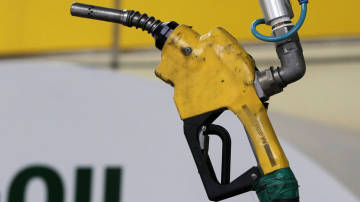With oil price tumbling, drivers to get a break
 Crude oil prices have tumbled to their lowest level in nearly seven months, creating headaches for producers but promising some relief for vacation drivers this summer.
Crude oil prices have tumbled to their lowest level in nearly seven months, creating headaches for producers but promising some relief for vacation drivers this summer.Just two months ago, analysts were warning that gasoline prices could top $1.60 a litre in Canada and $5 (U.S.) a gallon in the United States this summer as markets for both crude and gasoline were roiled by separate supply concerns.
But those markets have been in retreat for weeks, as hedge funds and other money managers pulled back quickly from their first-quarter bets that oil and gasoline futures were headed even higher.
After peaking at $111 (U.S.) a barrel in late February, the North American benchmark West Texas intermediate (WTI) lost $1.95 on Wednesday to $89.90 (U.S.), settling below $90 for the first time since October.
Several factors have contributed to the recent slump in crude prices: higher production in Libya, Saudi Arabia and North America; weak U.S. demand and recession fears in Europe; a slowdown in China; and a rising U.S. dollar, which tends to move in an opposite direction to crude.
Analysts also pointed Wednesday to an easing of tensions around Iran’s nuclear ambitions as the International Atomic Energy Agency said it was nearing a deal to inspect Iranian facilities. In February, investors feared Iran’s conflict with the Western powers could lead the OPEC member to attempt to close the Strait of Hormuz, through which much of the Middle East’s oil exports pass.
With that concern in abeyance at least temporarily, many experts believe the oil price slide is not over.
“With the strength in supply and slowdown in demand, we can see oil prices closer to $80 than $90 by the end of the year,” said Stephen Schork, a Villanova, Pa.,-based energy futures trader and analyst. Turmoil in Europe has caused the U.S. dollar to climb sharply against the euro – putting downward pressure on crude prices – and Mr. Schork believes the continent’s currency has further to fall.
Calgary-based oil producers such as Suncor Energy Inc., Imperial Oil Ltd. and Canadian Natural Resources Ltd., rode the crude prices to stellar profits in the first quarter but are unlikely to repeat those results for the rest of the year given the slump in prices.
But producers’ pain represents a gain for consumers, including businesses such as airlines and the trucking industry that have to pass along higher fuel costs to customers. In the U.S., gasoline pump prices have declined for seven consecutive weeks to $3.68 (U.S.) a gallon from a peak of $3.94 in early April.
In Canada, average pump prices were $1.285 (Canadian) a litre earlier this week, down from the peak of $1.367 in mid-April, according a survey by Kent Marketing Group.
That average masks wide regional discrepancies. Vancouver drivers faced the highest prices at $1.45 a litre, and Edmontonians benefited from the lowest at $1.10 while Toronto pump prices sat right at the national average.
This coming weekend – Memorial Day in the U.S. – marks the beginning of what analysts refer to as the summer driving season, when demand typically rises and pump prices edge higher. The National Energy Board said last week that Canadian prices would range between $1.20 and $1.35 a litre this summer, although that forecast was based on a WTI price of $100 (U.S.) a barrel.
You can return to the main Market News page, or press the Back button on your browser.

